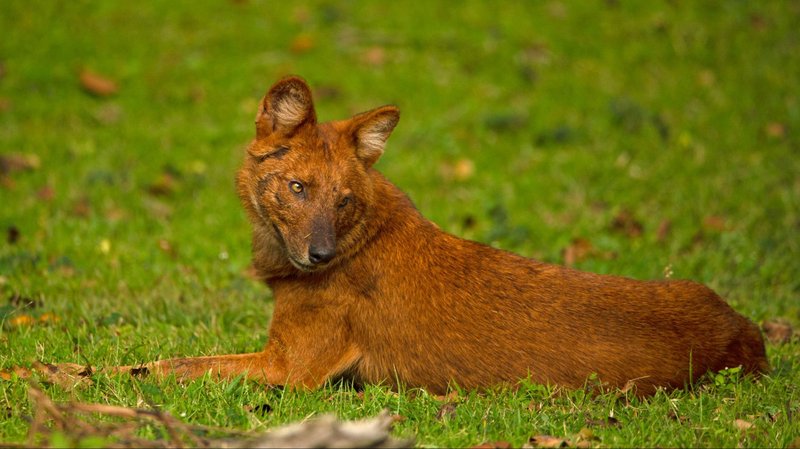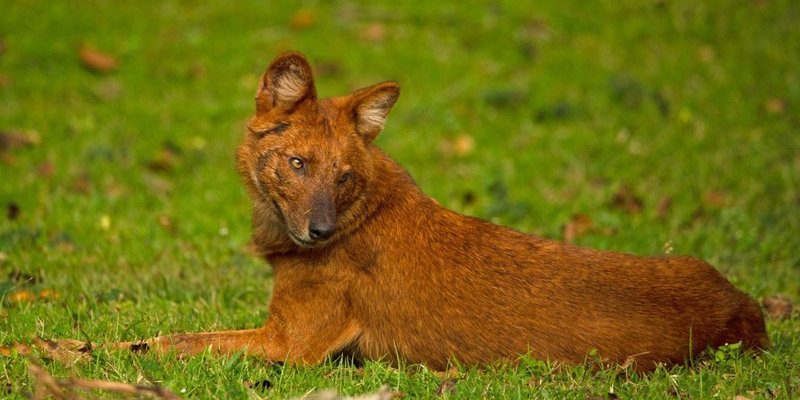
You might have heard whispers about the Dhole, a fascinating wild dog that roams the forests of Asia. Often overshadowed by its more famous cousins like wolves and foxes, the Dhole is a unique animal with a rich social structure and hunting techniques that are as captivating as they are effective. Imagine a group of highly skilled hunters, synchronized like a well-rehearsed dance, working together to bring down prey—this is the Dhole in action.
These animals are not just a pretty sight; they also play a crucial role in their ecosystem. You might be wondering why they aren’t more widely known. Their elusive nature and the remote habitats they choose make them a bit of a mystery to many. But once you learn about their behaviors, pack dynamics, and habitat needs, you’ll see why these animals deserve our attention.
What is a Dhole?
The Dhole, known scientifically as Cuon alpinus, is part of the Canidae family, which includes dogs, wolves, and foxes. They have a distinctive appearance that sets them apart: a lean body, a bushy tail, and a coat of reddish-brown fur that often appears almost golden in the sunlight. Their size can vary significantly; on average, you can expect a Dhole to weigh between 26 to 46 pounds and measure around 20 to 25 inches at the shoulder.
But looks aren’t everything! Dholes are social animals, typically living in packs of around 5 to 12 individuals. This cooperative behavior is crucial for their hunting success, allowing them to tackle larger prey and defend their territory. Their vocalizations are diverse, ranging from high-pitched whistles to complex barks, which help maintain communication within the pack. Each sound has its place in the social hierarchy, functioning like a language all its own.
Habitat and Distribution
Dholes are primarily found in a variety of habitats across Asia, from the forests of India to the grasslands of Southeast Asia. Their presence is often linked to areas rich in prey, such as deer and wild boar. One of their remarkable traits is their adaptability; they can thrive in different environments, including tropical rainforests, montane forests, and even scrublands. However, they tend to avoid dense jungles where visibility is low.
Interestingly, Dholes prefer regions with a good balance of cover and open space. This allows them to use their excellent scenting abilities while hunting. Their range has declined over the years due to habitat loss and human activity, making conservation efforts essential. It’s heartbreaking to think that these remarkable creatures, which once roamed wider areas, are now confined to smaller pockets of wilderness.
Diet and Hunting Behavior
A Dhole’s diet mainly consists of herbivores like deer, wild boars, and various rodents. Their hunting methods are quite sophisticated; they typically hunt in packs, which helps them take down prey much larger than themselves. Imagine a well-orchestrated team of athletes, each playing their part to secure the win—this is how Dholes function as hunters.
When on the hunt, they use tactics such as stamina running and strategic positioning. This means they can chase their prey over long distances, wearing them down until they’re unable to escape. Their success rate is impressive, often outpacing solitary hunters’ methods. Their collaborative spirit doesn’t end with the hunt; Dholes celebrate their victories with social interactions that strengthen their bonds. It’s a beautiful display of connection within the pack.
Reproduction and Social Structure
The social structure of Dholes is intriguing. Packs usually consist of a dominant breeding pair—think of them as the leaders of the family. They tend to mate for life, which creates stability within the pack. The breeding season occurs once a year, typically between late autumn and early winter. After about 60 to 70 days of gestation, the female gives birth to a litter of 4 to 10 puppies, which are born blind and helpless.
Puppies play a crucial role in maintaining the pack’s dynamics. They’re often cared for not just by their parents but also by other pack members, fostering a sense of community right from the start. As puppies grow, they learn valuable skills through play and interaction. This nurturing environment ensures that they develop into competent hunters and social beings, essential for their survival in the wild.
Threats and Conservation
Unfortunately, Dholes face numerous threats that jeopardize their survival. Habitat loss, due to deforestation and agricultural expansion, is a significant concern. Additionally, they often compete with other predators, such as tigers and leopards, for food resources. This competition can lead to conflicts and further decrease their numbers.
Moreover, poaching and human-wildlife conflict have heightened their vulnerability. As humans encroach on their territories, Dholes are often seen as threats to livestock, leading to retaliation from farmers. However, organizations are working tirelessly to protect these animals and their habitats. Conservation efforts focus on habitat preservation, establishing protected areas, and educating local communities about the importance of Dholes in the ecosystem.
Interesting Facts About Dholes
| Common Name: | Dhole |
| Scientific Name: | Cuon alpinus |
| Size: | 20–25 inches tall |
| Weight: | 26–46 pounds |
| Habitat: | Tropical forests, grasslands |
| Diet: | Deer, wild boar, rodents |
| Social Structure: | Pack dynamics, often 5-12 members |
| Lifespan: | 10–15 years in the wild |
Relationship with Humans
The relationship between Dholes and humans is complex. On one hand, they inspire awe with their hunting prowess and social behavior, and on the other, they can be seen as a nuisance due to their predation on livestock. As conservationists work to raise awareness about these animals, it’s essential to foster a positive understanding of their role in maintaining the balance of ecosystems.
Educational programs targeting local communities can go a long way in changing perceptions. By highlighting the Dhole’s significance as a top predator and its role in regulating deer populations, we can help alleviate fears and promote coexistence. It’s all about building a bridge of understanding, showing that protecting Dholes ultimately benefits everyone.
The Dhole is truly a remarkable creature. From its unique social structure to its impressive hunting skills, there’s so much to admire. Yet, they face significant challenges that require our attention and care. If we can learn to appreciate and protect this incredible wild dog, we not only help safeguard its future but also preserve the rich biodiversity of our ecosystems.
FAQ
Where can I find Dholes in the wild?
Dholes inhabit various regions across Asia, particularly in India, Thailand, and parts of China. Exploring national parks like Jim Corbett in India or Khao Yai in Thailand increases your chances of spotting these fascinating animals in their natural habitat.
Are Dholes endangered?
Yes, Dholes are considered endangered by the IUCN. Their populations have significantly declined due to habitat loss, competition with other predators, and human-wildlife conflict. Conservation efforts are crucial for ensuring their survival.
What do Dholes sound like?
Dholes have a variety of vocalizations, from high-pitched whistles to complex barks. Each sound serves a purpose, whether it’s to communicate during a hunt or to maintain social bonds within their pack.
How do Dholes communicate with each other?
Communication among Dholes is primarily vocal, but they also use body language. The combination of sounds and postures helps convey messages related to territory, hunting strategies, and social dynamics within the pack.
Can Dholes be domesticated?
Dholes are wild animals with specific social and ecological needs. Domestication is not feasible, as they thrive in their natural habitat and rely on wild prey for survival. Additionally, their complex social structures cannot be replicated in a domestic setting.
What do Dholes eat in the wild?
Dholes are carnivorous and primarily hunt herbivores like deer, antelope, and wild boar. They have been observed to adapt their diet based on available prey, showcasing their adaptability in various environments.
How long do Dholes live?
In the wild, Dholes typically live for about 10 to 15 years. Their lifespan can vary based on environmental factors, availability of prey, and threats from predators or human activities.
What role do Dholes play in their ecosystem?
Dholes play a crucial role as apex predators, helping control herbivore populations within their habitats. This balance maintains the health of the ecosystem, ensuring diverse plant and animal life continues to thrive.
Are Dholes social animals?
Yes, Dholes are highly social and live in packs typically consisting of 5 to 12 individuals. Their social structure is vital for cooperative hunting and raising young, highlighting their strong bonds and teamwork.
What conservation efforts are being made for Dholes?
Conservation initiatives focus on habitat preservation, establishing protected areas, and educating communities about the importance of Dholes. Organizations are working to mitigate human-wildlife conflict and promote coexistence.

